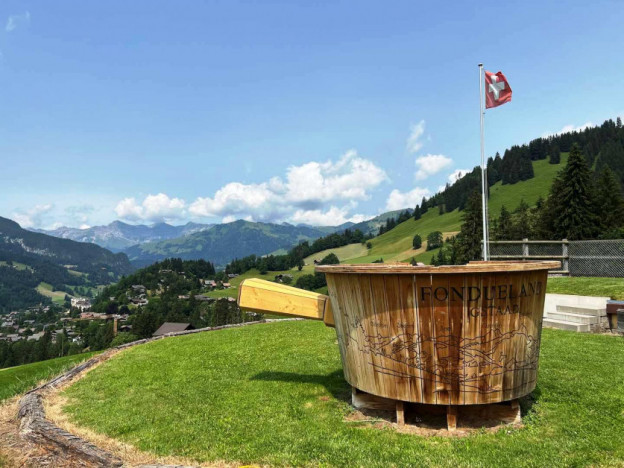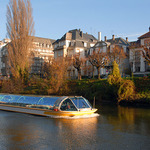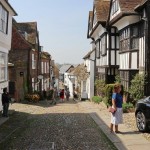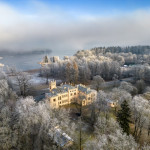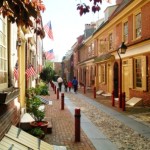Beverley Watts explores the hidden gems of Gstaad and the Saanenland region.
Bernie Ecclestone feels very much at home in Gstaad, Switzerland. The former F1 Supremo owns his own hotel, the Hotel Olden, in the swanky Promenade, and he’s just one of many well-heeled celebrities to hang out in the luxury resort town. Hollywood stars have long loved to ski here and celebrate a snowy Christmas. Brigitte Bardot slithered down the pistes in the 1960s and Madonna brought all her kids to Gstaad for a little local yodelling just last year.
But the Saanenland region, with its mountains, forests and lakes, isn’t just for affluent winter sports fans and the glitterati. Covering a spread of five long side valleys, the countryside is an idyllic location for alpine farmers who still keep bees, raise pigs, herd goats, milk cows and make cheese in the traditional way.
Free Summer Transport
Local legend has it that the area’s fingerlike terrain is the handprint of God, formed where he rested his arm during the creation. It’s certainly a gorgeous landscape with pure mountain air and fabulous hiking trails. For those of us who’ve never been CEO of Formula One, the complimentary Gstaad digital guest card is an appreciated welcome perk, giving free public transport from 1 May to 31 October. During the warm, sunny months, this locality in the canton of Bern is all yours to explore the hidden gems of Gstaad.
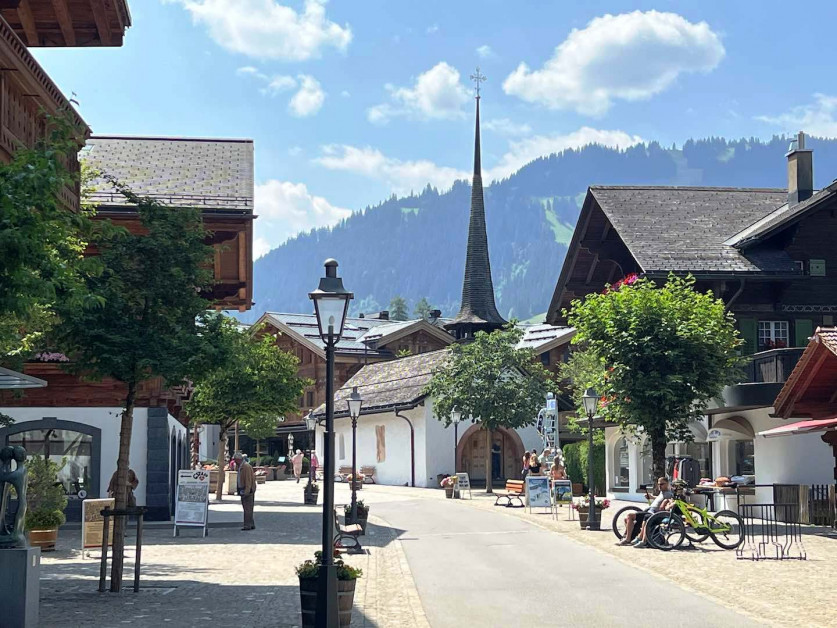
Every winter, Dominik Matti is a busy ski instructor but in summer you’ll find him making Berner Hobelkäse AOP cheese 1,600 metres up the mountainside. The unpasteurised alpine milk is as fresh as it comes, with Dominik’s Simmental dairy cows swishing their tails in their farmyard stalls after grazing in the rich meadows. These sturdy cattle have been bred in the Berner Oberland since the Middle Ages and each cow has a different sounding bell. The symphony they create as they walk helps every farmer know that their herd is sticking together.
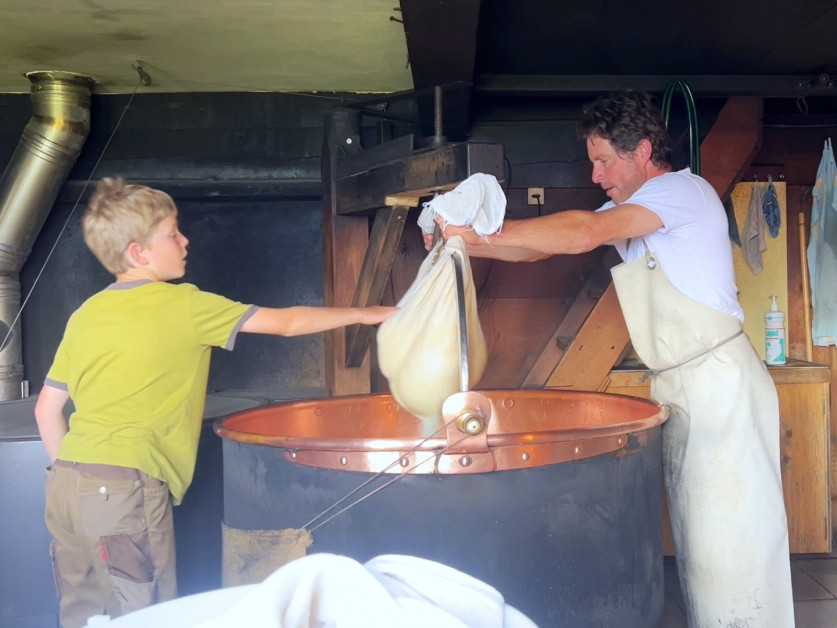
Watching Dominik heat milk in a huge copper vat and create massive rounds of cheese is mesmerising. A Matti family tradition for four generations, this artisan process has remained almost unchanged since 1548. The constant swirling used to be done by hand but in the 1990s, a rotating metal stirrer was finally introduced. Shaped by pressing into moulds, the delicious dairy wheels must be turned every day for a month and brushed with salt water. And, of course, storage and slow maturation is key.
It’s All About The Cheese
At the nearby Cheese Grotto, René Ryser opens the door to a sealed low humidity underground vault reached by ladder. This disused water cistern is now packed with towers of ripening Alpine Gold, stacked from floor to ceiling with the precious yellow rounds. Each of the 3,000 cheese wheels is carefully labelled with the farm and the maker and the best cheeses are matured for three years. In nearly 20 years, only two mice have ever managed to sneak into this cathedral of cheese and they undoubtedly thought they’d gone to heaven.
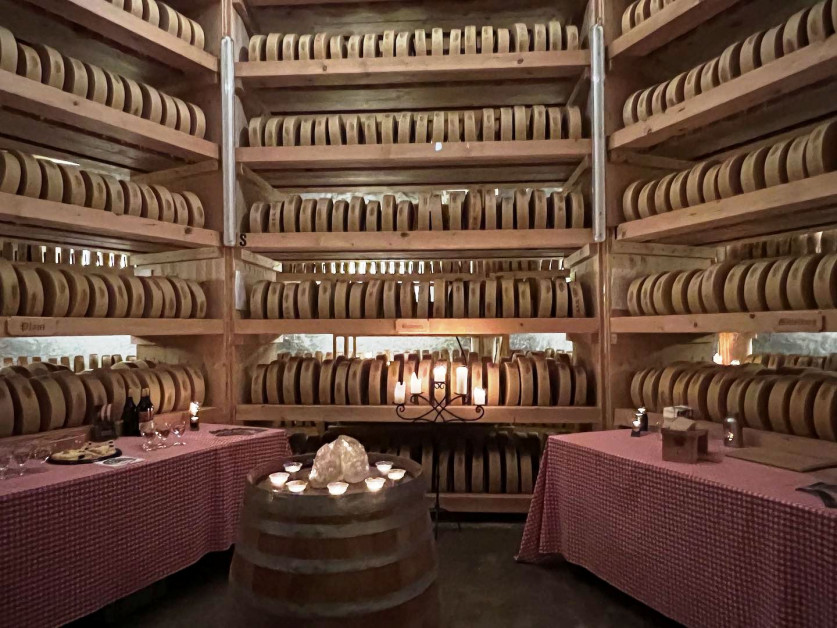
The must-have lunch in Saanenland is a cheese fondue, ideally eaten sitting in one of the outdoor XXL Fondue Caquelons. These are bookable eight-person giant wooden picnic tubs, built to look like a cooking pot and situated in scenic spots. The Fondue Backpack, which is part of the hire package, holds everything you need including warmer, plates, cheese mix, bread, spices and cutlery.
The Swiss eat an astonishing 25 kilos of cheese each a year and the secret to digesting fondue, which can lie heavy on the belly, is to serve it with wine, not water. (Yes, I learnt the hard way – literally – that gorging on a creamy mix of Gruyère, Fromage de montagne de Gstaad and Vacherin Fribourgeois can lead to a restless night.) The recommended tipple to be kind to the tummy is Fendant, a slightly sparkling dry white.
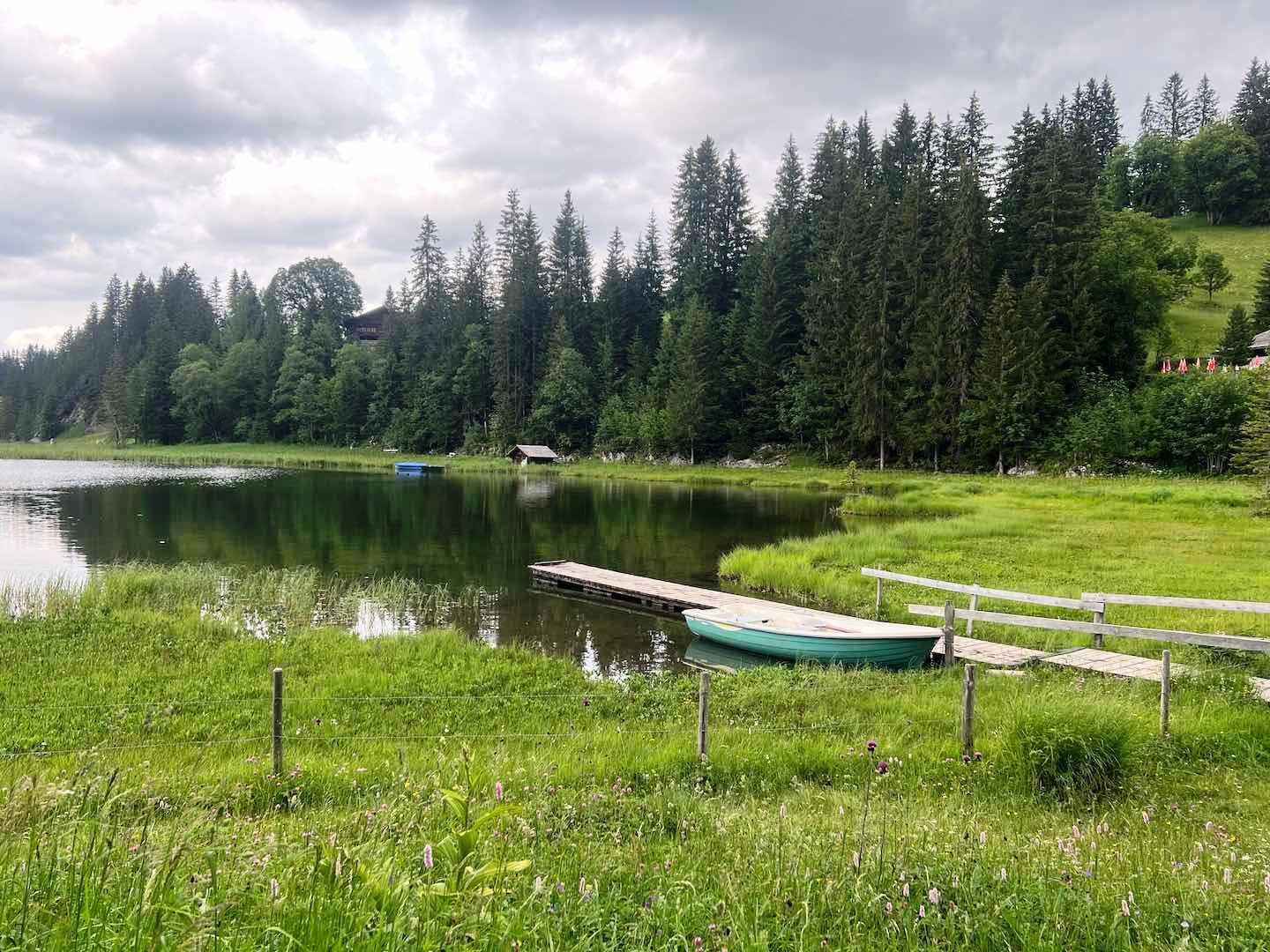
Destination Gstaad is made up of 10 picturesque villages including Lauenen, Saanen and Abländschen. It’s an hour’s uphill walk from the pretty hamlet of Lauenen, with its ancient mill, to the lake of Lauenensee. This nature reserve, where chamois deer like to graze and tufted ducks paddle, is bordered by lilac marsh orchids. There’s a little wooden pier for wild swimmers to launch themselves into the cool water or you can just admire the view of the craggy Spitzhorn mountain.
I was surprised to learn that several Bollywood movies have been shot in tranquil Saanen. The charming village church of Saint Mauritius, founded in 1228, was used for a scene in 1995’s Dilwale Dulhania Le Jayenge (The Big-Hearted Will Take The Bride). This classic romance ignited India’s passion for Switzerland, showcasing the fairy-tale locations to many millions of film fans. It’s the longest-running movie in the history of world cinema, still showing every day in Mumbai.
Detox Valley
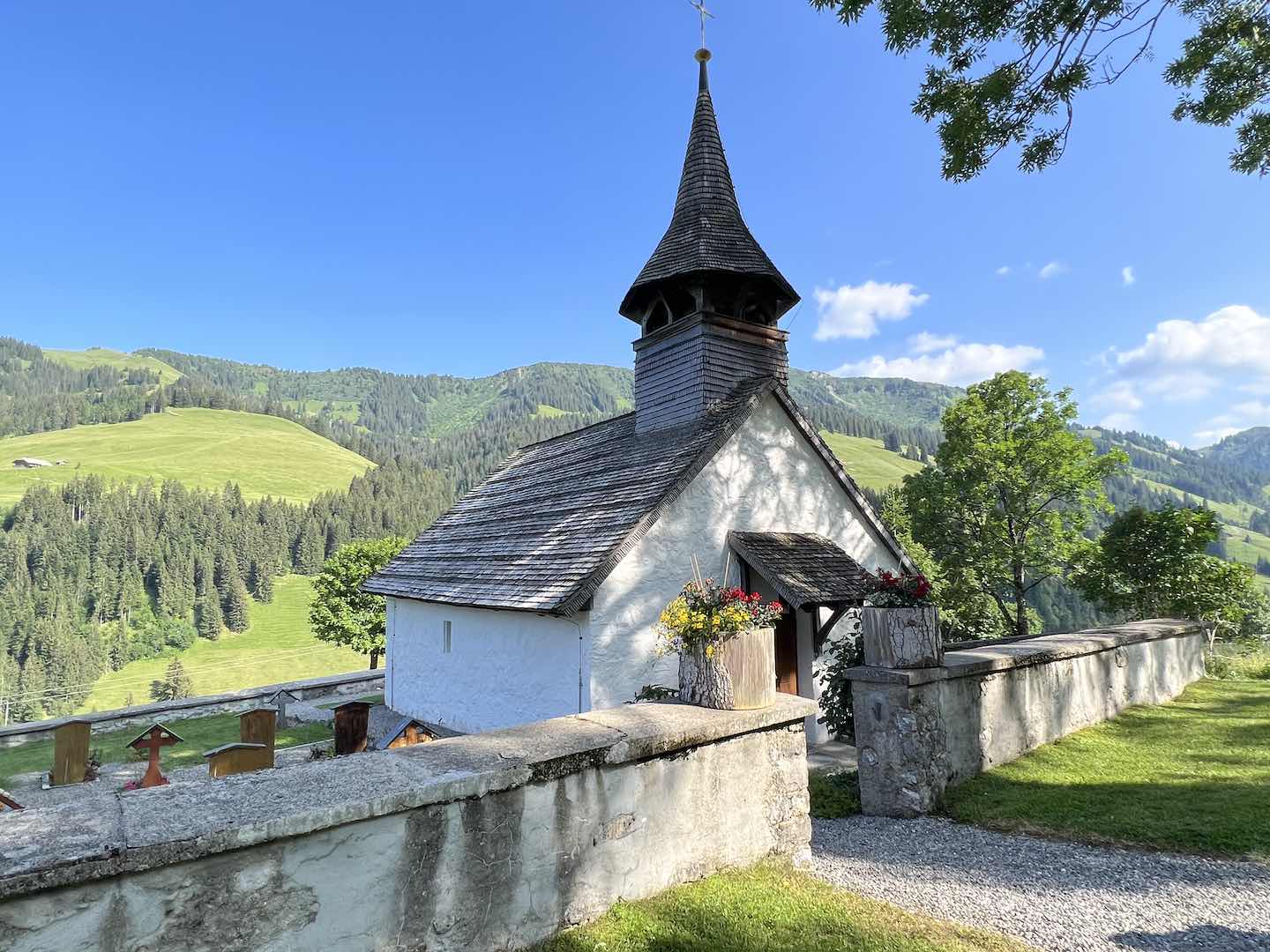
At the foot of limestone peaks, the village of Abländschen lies at around 1,300 metres above sea level. The tiny community enjoys rural peacefulness in what’s been dubbed Detox Valley, the perfect soul-soothing place in which to do absolutely nothing. Sustainable heritage skills have enriched the environment for centuries.
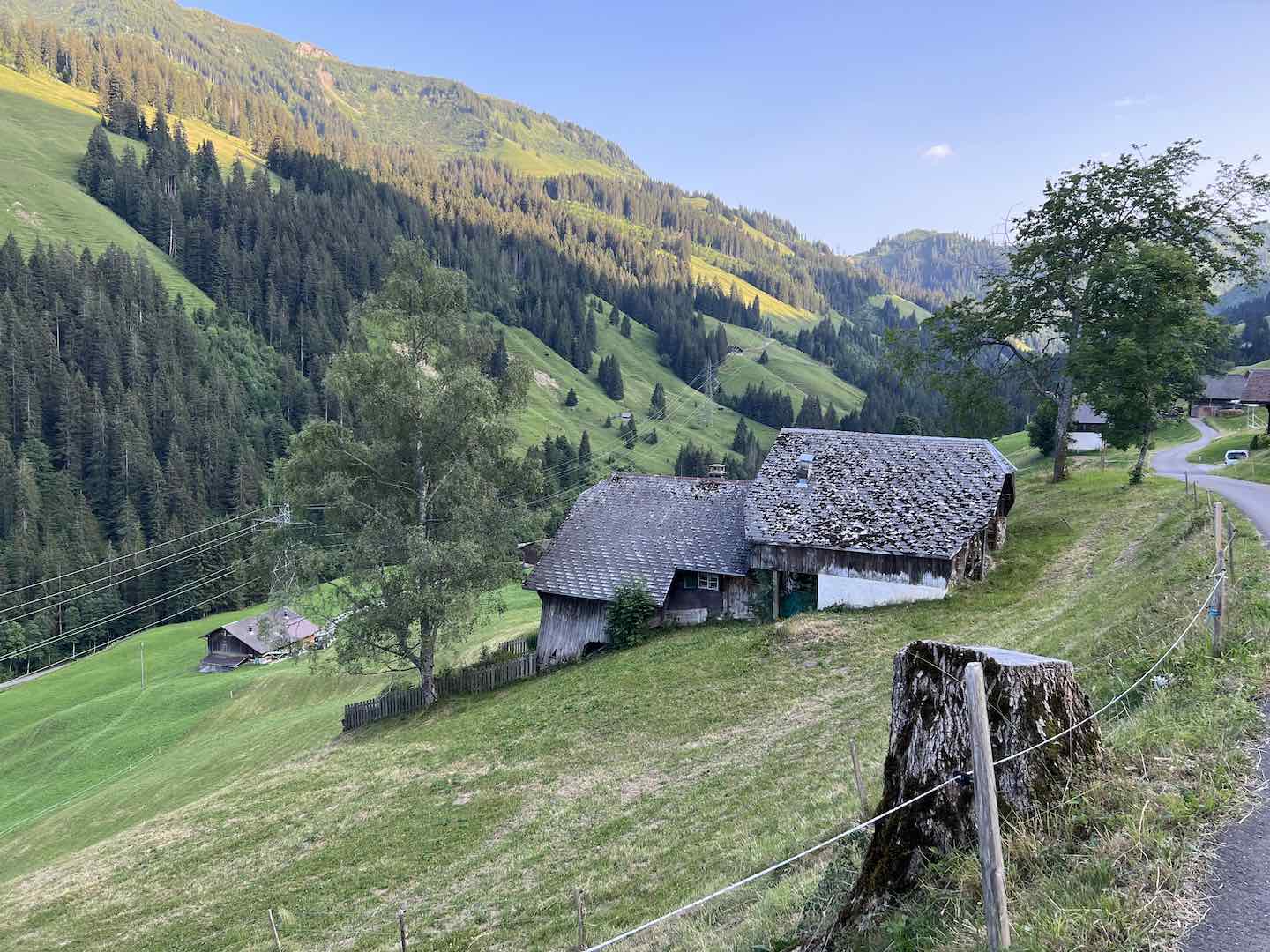
Beekeeper Werner produces glistening honey, plump pigs are fed on the liquid left from cheesemaking and craftsman Hans Dänzer cleverly splits beautiful handmade spruce shingles to roof Swiss homes. The woodworker also distills Enzian schnapps, a clear liqueur made from the roots of Gentiana lutea, a native yellow-flowered gentian plant.
If you arrive at the right time, you’ll find Hans-Peter Venner slowly leading his donkeys to their stables after a day in the lush fields or pulling a cart with a newly-married couple heading to their wedding reception. In the Abländschen valley, nothing is done in a hurry. The Swiss may be amazing watchmakers but here time almost stands still.
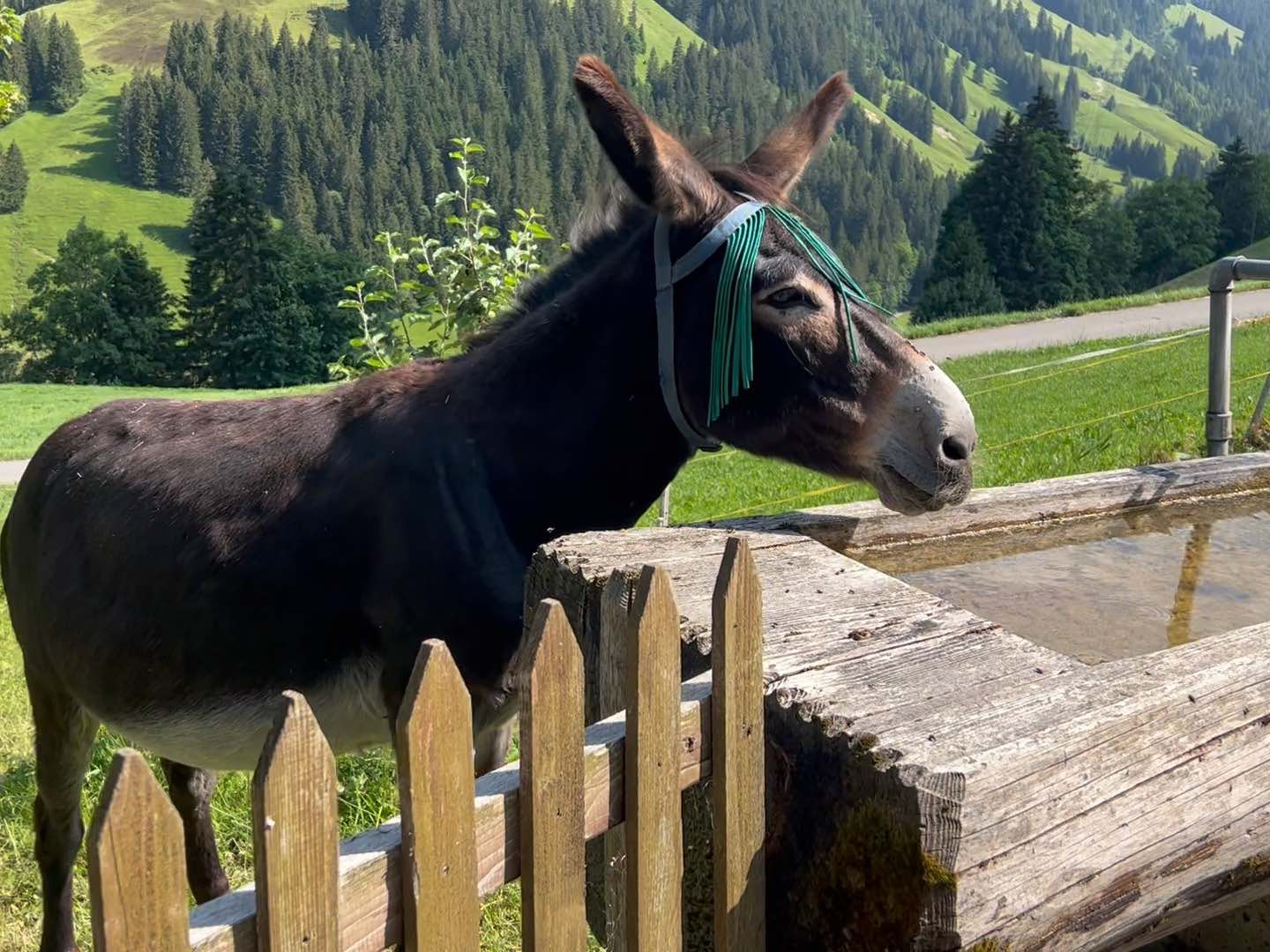
Back in Gstaad before the return to urban frenzy in the UK, Hotel Olden’s Manager Ermes Elsener invites my travel companions and I for a farewell aperitif. (Thanks, Bernie!) The drinks come with a selection of exquisite pastries and we sit contentedly outside at terrace tables, watching the world go by. There’s nobody in sight until suddenly a pack of cyclists in tight Lycra shorts and T-shirts whizz past at great speed.
‘That’s the Italian millionaires’ cycling club,’ Ermes tells us. Of course, why am I not surprised?
All images (C) Beverley Watts.
Tell me more about the hidden gems of Gstaad
Where To Stay And Eat In Saanenland
The 4-star Swiss chalet-style Golfhotel Les Hauts de Gstaad & Spa Saanenmöser is very cosy, decorated with lots of wood and soft colours. There are panoramic views of the mountains and a handy little supermarket very close by. (The local milk I bought there was the most wonderful milk I’ve ever tasted.) Start your meal at one of the hotel’s three restaurants with a refreshing Hugo aperitif, based on prosecco, elderflower, sparkling water and mint leaves.
The Berghotel Zur Sau Abländschen offers utter tranquillity, surrounded by nature. Guests get a very warm welcome and the locally sourced food on the menu is wonderfully presented.
At Hotel Restaurant Hornfluh in the Saanenmöser high mountain pass, only goats will be watching if you jump in the hot-tub after a hard day’s hiking.
Getting To Gstaad
I flew with SWISS to Geneva and then travelled by rail with a Swiss Travel Pass, covering train, bus and boat (available for 3-15 consecutive days) and including admission to 500 museums.
It takes around three hours from Zurich or Geneva Airport to Gstaad. Seat reservations are required when travelling on the GoldenPass Express
For more information on the hidden gems of Gstaad and these experiences in Switzerland, visit MySwitzerland.com and Gstaad Saanenland Tourismus

